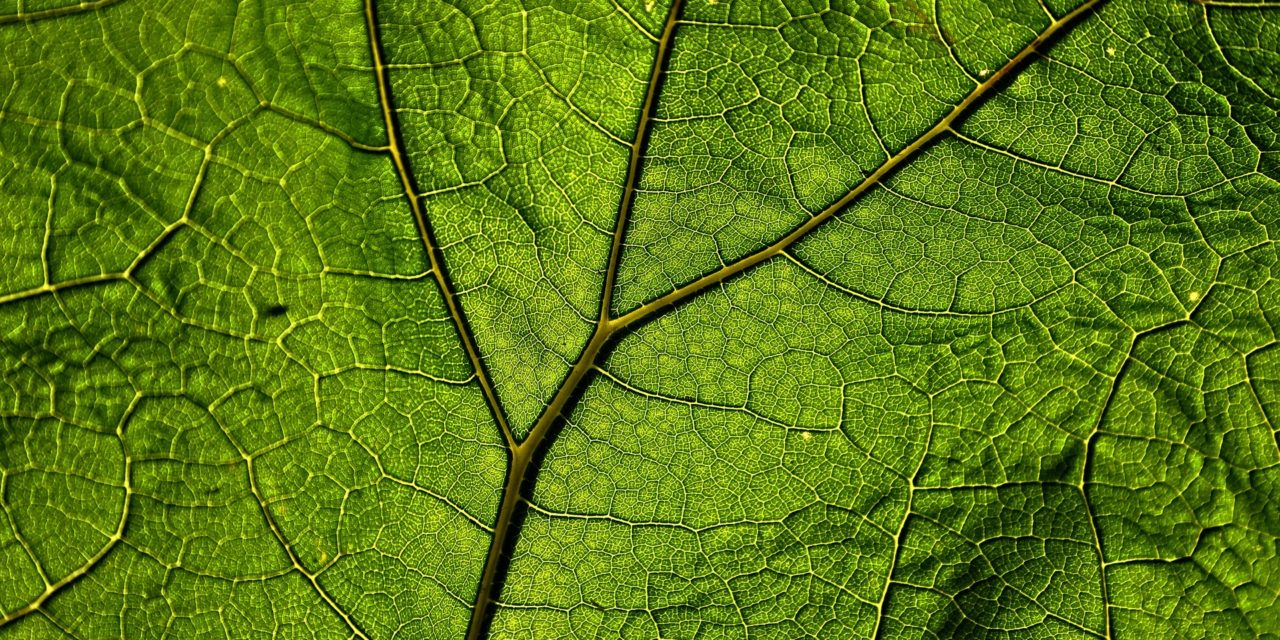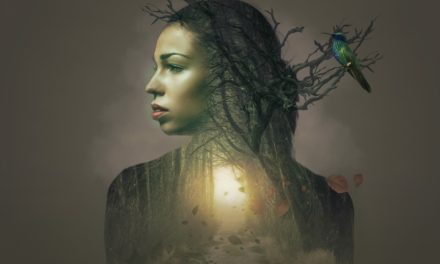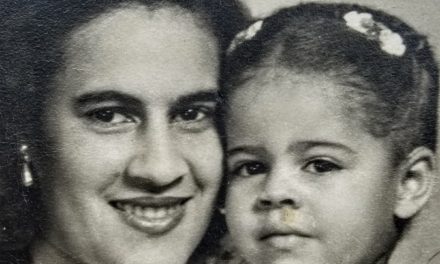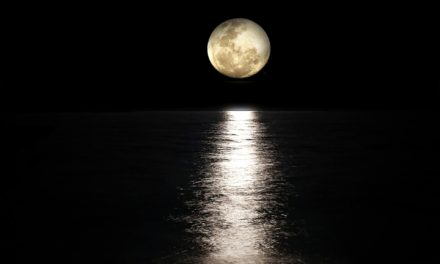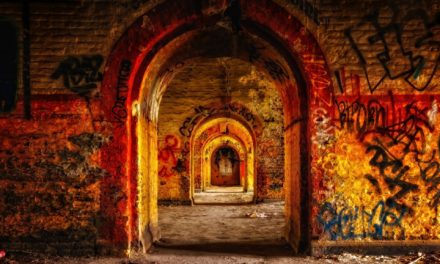Tekatsi’ tsiah:khwa Katsi Cook (Wolf Clan) is an Elder Mohawk grandmother and midwife who has led her people in a wide array of initiatives at the intersection of women’s reproductive health issues and environmental justice.
Katsi initiated the Akwesasne Mother’s Milk Project in 1981 to monitor and document levels of PCBs and other industrial pollutants in the breast milk of Mohawk mothers living near the St. Lawrence River. A midwife and women’s health advocate through the lifecycle, she is especially interested in helping Native American women and girls develop control of their reproductive power and voices. As an environmental activist, she points out that “Women are the first environment. In pregnancy, our bodies sustain life. At the breast of women, the generations are nourished. In this way, we as women are Earth.”
Katsi bases her midwifery in Indigenous ancestral knowledge. A founder of the National Aboriginal Council of Midwives, she has worked to return Native knowledge of birthing to Native peoples, so that births can again take place in their own communities with the wisdom of their cultures. Early in her professional life, she tailored a training program that included academic coursework in health sciences and clinical training in community-based programs. She has researched, written, and lectured widely on the subject of Indigenous environmental reproductive health.
Her home community of Akwesasne straddles both banks of the St. Lawrence River near Cornwall, Ontario, and includes parts of New York, Ontario, and Quebec. At home, Katsi is a founding member of Konon:kwe (“women”) Council. Taking Kahnistensera, or “Mother Law,” as its foundational principle, the members work as daughters of Sky Woman, weaving “webs of women’s wisdom” with prayer, healing ceremonies, and grassroots activism to empower and transform their traumatized communities.
Katsi is also the director of Spirit Aligned Leadership Program, which elevates the lives, voices, and dreams of Indigenous Elder women who are working to heal, strengthen and restore the balance of Indigenous communities.
A mother and grandmother, conscious of her responsibility to future generations as well as this one, Katsi spoke with Leslee Goodman, publisher and editor of a deeply illuminating publication titled The MOON Magazine. Leslee has generously agreed to share her interview with Braided Way readers.

The MOON: Will you tell us a bit about your life story? Did you grow up in a traditional family?
Cook: I always have a problem with “tradition” and “traditional” as descriptors. There are layers of tradition: ancient, historical and contemporary. The more appropriate question would be about my family’s history. That alone would take a few hours or more. But I understand the spirit of the question, in the sense of ancestor and elder teachings, so yes, I grew up in a traditional family deeply rooted in historical narratives, political action, and cultural memory.
Beyond the concept of “tradition,” however, we might talk more specifically about Indigenous cosmology, or Native worldview. This is distinct to each people who occupy a particular place on Mother Earth. Our identity begins with the Haudenosaunee creation story. How does it account for our people from our beginnings? How does that super-narrative, which we consider to be the collection of many ancestral dreams, impregnate our people and our land with structures of meaning?
Ours is a different creation story than one would find in other Indigenous ecologies around Mother Earth, because creation stories are, in fact, ecosystemic. They belong to a specific place on the Earth from which traditions emerge. That’s the actual meaning of the word indigenous: arising from a specific place on the Earth. The knowledge, the stories, the performance through ceremony, all of these bundled concepts, form the cosmovision that arises out of the territory that one inhabits. The cosmovision of a specific people in a specific place is embedded in their creation story.
![]()
The MOON: Most non-Native and urban readers did not grow up with that kind of understanding. They are probably many generations removed from it. Would you be willing to tell us how growing up with all of that history—that collective bundle of dreams that were informed by the ecosystem—informed your upbringing?
Cook: It goes to our history, and it’s hard for me to know how far back to begin. Let’s start seven generations ago. In my own family, I am a daughter of the American Revolution. As a Mohawk woman, I ground the stories I tell my children and grandchildren in the narratives of ancestors that inform who we are today, upholding their core value of freedom! One legendary ancestor was my patrilineal grandfather Joseph Louis Akia’ton:haron’ken Cook, an influential Mohawk leader and commissioned officer in the Continental Army during the American Revolution. When he was a boy, he and his Abenaki mother were taken by Mohawks to Kahnawà:ke, an ancient Mohawk village across the river from what is now Montreal, Quebec, where they were adopted by a Mohawk family. By the age of 18, Akia’ton:haron’kwen was a Mohawk patriot fighting under the French General Montcalm at Fort Duquesne (present-day Pittsburgh). In 1760 Colonel Louis organized and led an Iroquois force of 1,000 Mohawks of Oka and Kahnawà:ke, as well as Abenaki, Huron and Nippissing warriors in the battle to overthrow the British in the heart of Quebec City, accompanied by the French army officer Chevalier de Levy. In turn, he was personally recruited by George Washington to fight in the Continental Army with the Revolutionaries against British colonial power. That’s just one character in the constellation of the kinship structure that I grew up in.
Because I belong to a matrilineal society, the story of where I come from begins with my mother. So I say I come from the Mohawks of Kahnawà:ke, where she was born. It’s this kinship structure and the histories associated with the different generations that informed my upbringing. Certainly, people from all over the Earth have such histories, even those born in the globalized world we now inhabit. Most people just don’t know their stories, perhaps. One of the structural differences between First Nations and other communities is that we still appreciate having consciousness of deep history and its relation to what we do today. We have the sense that we’re carrying forward those struggles, those aims, those concerns and qualities that our ancestors messaged to us through the stories they left behind, and the realities they left behind.
Personally, my own grandmother delivered me at home into the arms of my own family. She delivered me to a woman who was told never to have children because of the threat to her life, and helped raise me. She was a one-woman institution. From womb to tomb she took care of our extended family.
I’m describing something really precious. To have been born in my grandmother’s big quiet iron bed. To know that she embedded in my bellybutton a thread because I was bleeding from the cord stump at my birth. To grow up in her care. To be teased by all my cousins, “You better not make Grandma mad or she’s going to take her thread back.” [Laughter]. I realized very early that I wanted to be a midwife because I saw in her home not only her support of my mother’s labor and delivery, but the wake she held for my mother, who passed away at the age of 42 when I was 12 years old. As a young girl I recall hearing the singers from my mother’s village sitting up and singing for her all night long. That’s another of the traditions I grew up with.
I also grew up knowing the medicines, the plants, and their relationship to the Mohawk people of the Great Lakes Basin and St. Lawrence River. These, too, are elements of my identity, or specificity, of what it means to be Mohawk after all of these centuries of colonialism. All of those elements survived. It’s our duty as mothers in our matrilineal society to maintain in our children the knowledge systems that come from our ancestors. In addition to educating our own in the social context of our clan system, we face the new challenges of bringing in people who didn’t grow up in this community and socializing them so that they can participate as well. So, as you see, these are very big questions you’re asking.
My idea of the traditional encompasses all the areas of sovereignty that my generation articulated at an important internal meeting of Haudenosaunee activists, the Loon Lake Conference of 1977. These “five areas of sovereignty” include control over our land base, control over the jurisdiction of that land base, control over our education, self-determination of our psycho-spiritual life, and self-determination, or control, of our domestic health, which focuses on reproduction and the continuous reproduction of bodies in our culture. For me, “traditional” encompasses that larger framework and affects not just me, but my whole generation here in my community. As Mohawk people, my ancestors have all worked towards control and self-determination of these aspects of our lives. As I move around the Earth and interact with other Indigenous people, I see that we share these similar goals about self-determination, and renewing and revitalizing our communities around this set of goals.
Here in my community, our Longhouse is the site of the practices for maintaining our medicine societies—our knowledge around healing and well-being—and our kinship structures according to three clans, Wolf, Turtle, and Bear. I belong to the Wolf Clan. We maintain our social ecology of “sitting across the house” from the other clans.
![]()
The MOON: I’m struck by the depth of knowledge that informs your sense of self. I barely knew my great-grandparents, let alone our history seven generations back. And I have equally limited knowledge of the ecosystem where I was born. I feel like a five-year-old asking a doctor of philosophy to explain her dissertation. [Laughter]. I didn’t even think to consider how you are able to sensitize newcomers to all that they are ignorant of when they move into your community.
Cook: Well, there are different levels of socialization because history is complex, right? For example, we have three jurisdictions in my community because it’s bisected by an international border, which was dropped right through our community after the War of 1812. This means we have three governments in a community of 15,000 Mohawk people. And we’re only one of five or six Mohawk communities that are strewn across the Canadian provinces of Ontario and Quebec, and the state of New York. So of course we have non-Native mothers in our community, for example. My generation is trying to figure out how to bring non-Native mothers into the community so that their children can participate in the ceremonial life, as some have chosen to. Not all will. We even have Mohawk people who have no idea what it means to be Mohawk because of colonialism and the socialization pressures to assimilate. That’s not just a reality that Mohawk people have to face, but in the small world web that I work within, we strive to replicate Mohawk culture so that women’s issues, women’s concerns, and women’s capacity for continuous creation support the growth and development of other leaders in my community. I follow my grandmother’s model to build out from that. My first task was to create it within my own family—and I’m the mother of six children and 11 grandchildren so far. But I also belong to a generation of 52 cousins, just on my father’s side. So, all these years later, I am privileged to sit among many leaders in my community—clan mothers, executive directors, healers, tribal chiefs, and activists. There’s leadership everywhere I look, in political, social, cultural, jurisdictional and family contexts.
All of the areas of sovereignty that I mentioned are the concerns, or should be the concerns, of every human being. To me, the phrase, “white man,” has nothing to do with race; it has to do with consciousness. Consciousness is informed by ancestral teachings, experience, histories, knowledge systems, and narratives. I’m very well informed and, in fact, a teacher of those narratives. Our Iroquois creation story is the foundation that my generation is charged with revitalizing to create meaningful rites of passage for Mohawk youth coming of age in this time and place. It’s our job to recast our story to strengthen our youth in their adolescence and their emerging adulthood so that they not only understand who they are, but also what work there is to be done in our community so that we have the continuity of culture, of language, and all of these areas of sovereignty.
![]()
The MOON: You’ve mentioned the Iroquois creation story a couple of times. Would that be a good way to give an example of how you’re maintaining your own cultural sovereignty, spiritual sovereignty, and other aspects of identity in the face of onslaught everywhere around you?
Cook: Yes. I also want to situate Iroquois teachings, again, within a specific ecological space on Mother Earth. This is important—and the reason why Native people are not evangelists. We understand that people who come from a different place on Earth will have a different consciousness about the purpose of being human. A Mohawk doesn’t go to the Hopis and attempt to make everybody Mohawk. It’s a different ecology, a different body of information for human beings that comes directly out of the Earth. Our challenges in relation to our ecosystem are very different from the challenges—the life experiences—of the Hopi, or the Lakota, or other First Nations’ experience. Our political struggles are the same, but what it takes to uphold our worlds is defined by those creation narratives. What I love about being Kanien’kehá:ka, or Mohawk, is that my creation story is about a pregnant woman who falls from the Sky World through a hole created by the uprooting of a celestial tree of medicines, of knowledge, by a Sky Chief. The Sky Woman was looking in curiosity through the hole and fell through the sky, but was assisted by the birds and other animals to land safely on the back of a great turtle, the North American continent, which we call Turtle Island. In revisiting this story more carefully for contemporary times, we see in Sky Woman’s experience an action we call down fending, which means seclusion, ritually set apart by the down of the cattail.
In her story, the mother and the uncle arrange for the young Sky Woman in her age of puberty to be covered with corn husk, to be set apart ritually, and then encircled with cattail down in the space where she is ritually secluded. This ritualization continues through the whole adolescent period. Through our creation story, we see Sky Woman prepared for a destiny that ultimately included her role in bridging a world that was dying, as represented by the great flowering tree that had been uprooted, to this one on Earth that we currently inhabit. We can see parallels in the uprooted flowering trees of our own time. Everywhere, we see Earth wilting and dying. We must bridge the gap by creating new ways of living in and caring for the world.
Updating our interpretations of indigenous narrative is a co-creative process undertaken by each generation. That’s how we maintain the currency of our ideas and practices. For example, we still maintain our indigenous corn varieties and use them in ceremonies. As a midwife, I was taught that we learned midwifery from maize, from o:nenhste, herself. In the Mohawk language, the word for maize has a deeper understanding than the European word for any kind of grain, the word corn. When you look at the deeper meaning of the word in our language, it breaks down into ho, a sacred covering, and kah’neha, the seed. The final sound steh, indicates duality of the male and female, so you begin to see “the sacred covering of the male and the female.” In talking to our clan mothers, who speak fluent Mohawk, and thinking back to our practices and language around growing and reproducing a life-sustainer such as maize, we were inspired to name the life-sustaining rite of passage for today’s youth Ohero:kon, which means “under the husk.” It refers to ritual seclusion under the attention of spiritual guardians.
There are many moments in life where an individual must go “under the husk,” symbolically. Pregnancy itself is the enactment of down fending (ritual seclusion) because the old teachings are that the pregnant woman kept herself apart from the daily activity of the community. The practices she undergoes were easier to enact in those days than now, when women are working until the day they go into labor. But Indigenous people the world over understand that when a woman is pregnant, the fetus grows and develops through her experiences. The baby sees through her eyes, hears through her ears – everything the mother experiences, her growing and developing fetus experiences. This is especially true in the last trimester. There’s a conversation in the last trimester between the mother and her growing fetus. And then, having led a body of work called, “Woman, as the First Environment,” I’ve begun to realize that this is true even after we’re born. The practices under which we’re raised, the conditions under which we live every day as human beings, no matter how old we are or what stage of growth and development we’ve achieved, affect our genome. The emerging literatures of epigenetics also reflect this understanding of our relationship to the environment. Everything we eat, everything we hear, everything we see, everything we experience, messages our genes, with implications for our health and well-being. And so, this idea of down fending and of our first environment being projected through the life cycle, come to us from our Mohawk creation story.
We attempt to integrate these teachings into all aspects of life. When a woman comes to us for prenatal care, we introduce her—if she’s not already introduced—into the cultural teachings of the stage of life she is entering. She is not just incubating a fetus; she herself can be incubated, supported by, a culture that stretches back hundreds of years and is alive around her now. That’s why we reference our teachings in order to affect our capacity for self-determination, sovereignty and freedom in all of the areas of our lives.
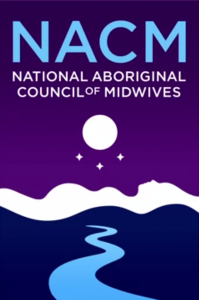 Similarly, as we support our youth through the Ohero:kon rites of passage, they will understand their place in the Haudenosaunee lineage, which extends forward as well as back. The rite includes workshops and skills-based learning, such as how to make a fire without matches, how to sit and be with oneself, how to use the internet safely, how to recognize a safe vs. unsafe relationship, how to manage the care of one’s own body, and so on.
Similarly, as we support our youth through the Ohero:kon rites of passage, they will understand their place in the Haudenosaunee lineage, which extends forward as well as back. The rite includes workshops and skills-based learning, such as how to make a fire without matches, how to sit and be with oneself, how to use the internet safely, how to recognize a safe vs. unsafe relationship, how to manage the care of one’s own body, and so on.
As one of the co-founders of the National Aboriginal Council of Midwives, I’m a founding aboriginal midwife of the first freestanding birthing center in Canada. This was focused as reclamation of the transformative power of birth. That movement has grown throughout Canada and impacts even the growth and development of Indigenous midwifery in the United States. We also relate across the globe to other Indigenous midwives. That’s an example of the significance of elder knowledge and Indigenous leadership to reassert that knowledge.
The American society that we all have to function in is a really difficult space for all of us as human beings. But in the research that’s being done on problems encountered by Indigenous youth in North America, the findings always lead back to identity: Who are you as an individual human being? What is your purpose for being in the world? What is your destiny in relation to this idea around sovereignty and self-determination?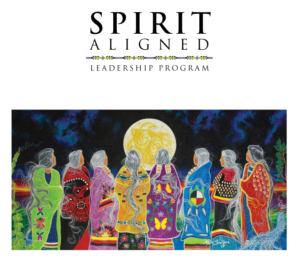
As executive director of the Spirit Aligned Leadership program, my work is to support elders from a geographically diverse North American continent. That’s another example of what there is to be learned from our creation story: each continent in the globe has a continental core, an ancient geology that informs how its aboriginals are going to be human beings in a specific place. Turtle Island is now populated by people who come from all over the globe. So again, the history comes into play. People should learn their own history.
My main message to MOON magazine readers is that you should learn the ecosystem of which you are a part, where you live now. Think of the region where you live as a biosphere. In many biospheres, the Indigenous people of that region continue to struggle to uphold the quality of life of those areas and to maintain the relationships of the human being within that. You can support those efforts, those endeavors, and attempt to understand how cosmology informs good human behavior. In many places, the ancient memory speaks of the “original instructions” given to the people of a specific environment for success in that environment. This ushers a return to the Native worldview, which is still maintained by the ceremonial, ritualized representation within these spaces on the Earth, within time, within the space of the four directions in Indigenous homelands. The truest messaging comes from these shared, historical narratives, the metaphors, the ceremonial practices, and the dreaming that give you and your land your identity and the structures of meaning that inform who you are and where you are.
![]()
The MOON: When I was anticipating getting to talk with you, my husband and I ended up having to spend the night unexpectedly in a city; not a very big city, maybe 100,000 people. I normally live out in the country, so being in this urban environment felt overwhelming in terms of concrete, asphalt, metal, traffic, noise, and sheer ugliness. There was sky above me, but I felt surrounded by an artificial and non-life affirming environment. Since most people now live in urban environments, how do they reconnect with a land and culture that might inform and sustain them? (On the other hand, I know people who are comfortable in cities and are scared of nature [laughter].) I don’t mean for you to solve this problem, but how can somebody who’s been divorced or cutoff for perhaps decades or generations begin to reconnect?
Cook: I think that we all have to, no matter where we come from, find a place and a way to immerse ourselves in the natural world. This is why I brought up this idea of biospheres that are protected and maintained by the indigenous people of that region. When I say “maintained,” I mean their spiritual and practical relationships to the waters, the elements, the animal life, the soil, the plant life, to all of the elements of nature. If you had access to a biosphere preserve you could go and study there. However, if you live in a place that seems lifeless, as you just described, you have to revitalize your own sense of humanity and find the natural world within it. It’s there, but you have to find it. And know that it exists inside of you, as well.
You are a part of nature no matter how much concrete and plastic surround you. This was one of the painful parts of my midwifery practice in my own community, finding that our proximity to an EPA Superfund site meant that PCBs are now in our bodies, in our mothers’ breast milk. When one of our babies is born, the cord blood has over 200 industrial chemicals in it. Rather than mourning this fact as a source of continuing oppression or depression of how we as human beings continue to violate the original instructions that come with living on the planet, instead I took it as a quest—a quest that each one of us has to pursue in our own lives: How to return to an honorable relationship with the environment that sustains us? Wherever you live, there are teachings that belong to that specific area, and I encourage you to discover and engage them. You can start with yourself, with the human life cycle. How do we as women live inside our own bodies? This is where nature begins for us. How do we give birth as close to the Earth as possible? And with each woman, with each birth, with the growing of each child, there are moments where we must engage nature to be able to maintain our ties to the natural world. Indigenous people have many of the teachings associated with that continuity, with what it means to be human.
![]()
The MOON: Do you think that there is an awakening at long last? Do you feel like that there’s finally a recognition that Indigenous people have knowledge and leadership that we need to listen to and follow?
Cook: Absolutely. Our whole impulse has been to share, protect, and document that knowledge in ways that are self-determined so that it’s not abused. However, there are shared pieces of it. But essentially, the respect, the equity, the empowerment, that underlies the different elements of maintaining that knowledge is the sharing that’s been going on. At my age and in my generation, our challenge is to educate and inform our present and coming generations to carry on these teachings. Having said that, audiences need to understand that they have already been indigenized in many ways. Consider corn, maize, which was one of the first things Indigenous North Americans shared with the world. She’s a cultural change activist, the maize itself, because the populations of Africa and China could not have been sustained without the sharing of the maize from this hemisphere. Like Sky Woman herself, our maize continues to transform cultural realities of human beings across the Earth.
It’s important to appreciate what has been shared from the Indigenous people of the Earth. Recently, a Mohawk seed-saver in California received from a village in Italy an ear of corn from seeds that were taken there several hundred years ago. Through the outreach of a seed-saver group in California, the villagers in Italy sent her an ear of the corn that they’ve been holding on to for all these years, as a way of honoring the original gift. We’d lost that seed, but it came back to us and was planted last year in the Hudson Valley.
This idea of sharing across cultures is an old one, even in our Iroquois Confederacy. We have songs and hand games we perform from tribes who no longer exist because they were wiped out. There is also the Haudenosaunee Thanksgiving Address—the words that are said before all else. It is such a powerful statement of our relationship with Mother Earth that it has been widely borrowed. It is ancient and yet it still informs our daily life. One has to recognize we are all related in this struggle for survival. That’s why I resist the idea of extinction that has underlain the scholarship of the social sciences for the last 150 years. By attempting to tie “traditional” to an historic moment, we diminish the adaptation and resistance that really characterize Indigenous consciousness in reality.

